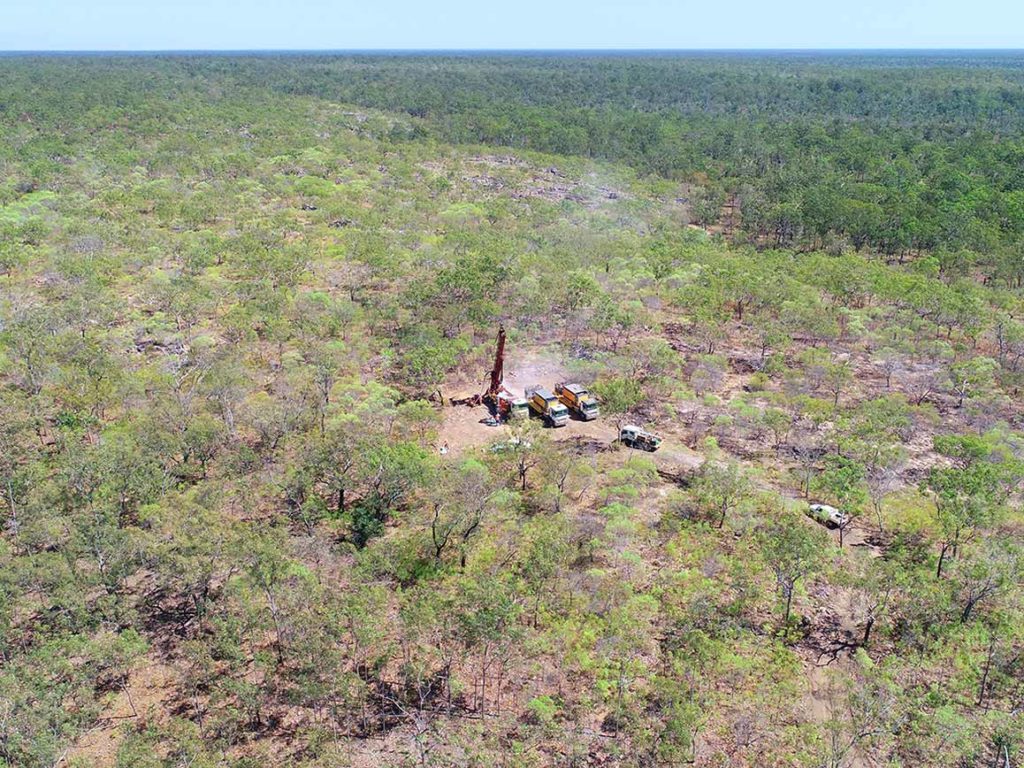Ore sorting test work from TOMRA Sorting Australia has Vimy Resources thinking about higher grades, lower capital and operating costs, and the production of precious metals at its majority-owned Angulari uranium-gold deposit in Australia’s Northern Territory.
The ASX-listed company, which has defined an inferred mineral resource estimate of 26 Mlbs of U3O8 (0.91 Mt at 1.3% U3O8) at Angulari, already thought the deposit, part of the Alligator River project, had potential to fit into the first quartile of the global uranium cost curve, but now it has eyes on further improving its cost position.
An ore sorting proof of concept trial conducted by TOMRA using its COM X-ray Transmission Tertiary system factored in a 41.5 kg sample that was obtained from mineralised material collected from drill core that Cameco Australia drilled in 2011 and 2016.
The trial on this material saw the uranium concentrate grade increase from 1.2% to 2% U3O8 (70% increase) with high U3O8 recovery. Alongside this, the sample gold concentrate grade increased from 0.7 g/t to 1.1 g/t (47% increase). On the latter gold work, Vimy said: “This warrants further investigation given no gold processing or recovery test work has been undertaken to date.”
The test work also showed that gold mineralisation is spatially coincident with the uranium mineral resource within the sample.
Some 13.5 kg of this 41.5 kg sample was not sorted due to the high uranium grade, which provides additional upside in future trials, Vimy noted. Other potential by-products were also identified, including platinum and palladium.
All of this bodes well for cutting the capital and operating costs that Vimy was unable to disclose to investors as part of its December 2018 scoping study on the project.
A higher feed grade from ore sorting would likely result in lower operating costs, the company said.
Meanwhile, smaller hydrometallurgical plant circuits would likely be required for the same level of production. Coupled with a potential reduction in acid-consuming phases in the concentrate, ore sorting has the potential to lower reagents (and water) usage and costs on a per lb U3O8 produced basis, noting that expected reagent use is already low, Vimy said.
“A smaller plant would result in a lower overall disturbance footprint with commensurate approvals and capital cost benefits,” it added.
Mike Young, CEO of Vimy, said, “The results of the TOMRA ore sorting trial at the Alligator River project’s Angularli deposit have exceeded our expectations. The high-grade nature of the deposit, coupled with the ore sorting outcomes, enhances the prospect of Angularli’s potential future development as a low-cost uranium operation.
“Our next step is to progress the upgrade trials and investigate the potential for the recovery of high value by-products associated with the uranium mineralisation at the Angularli deposit.”
The Angularli deposit is located in the King River-Wellington Range tenement group which is managed in a joint venture (Vimy 79%: Rio Tinto 21%) with Rio Tinto Exploration Pty Ltd, a wholly owned subsidiary of Rio Tinto Ltd.











